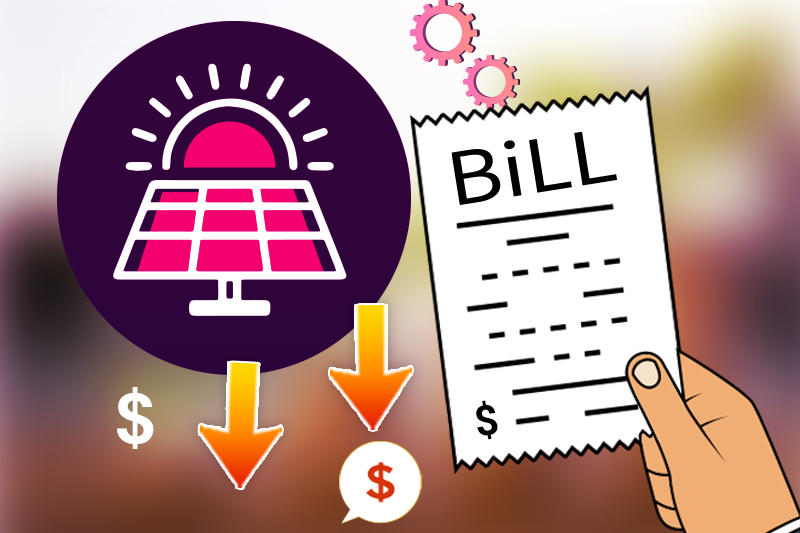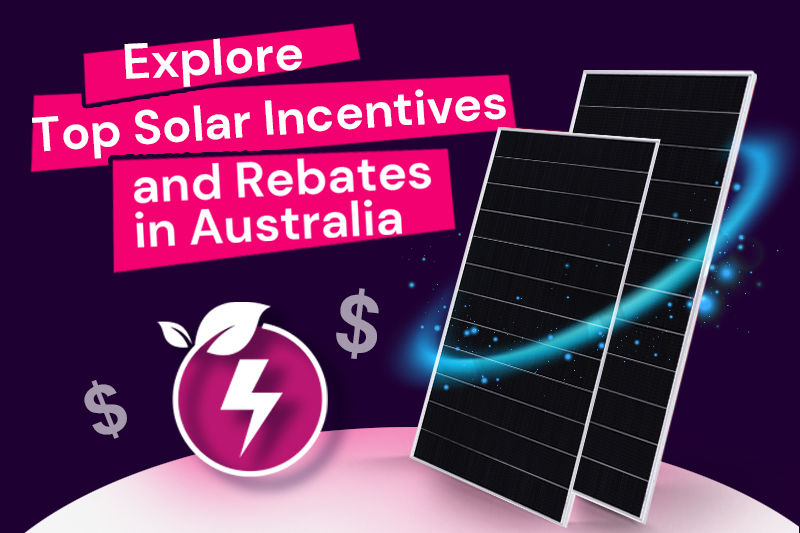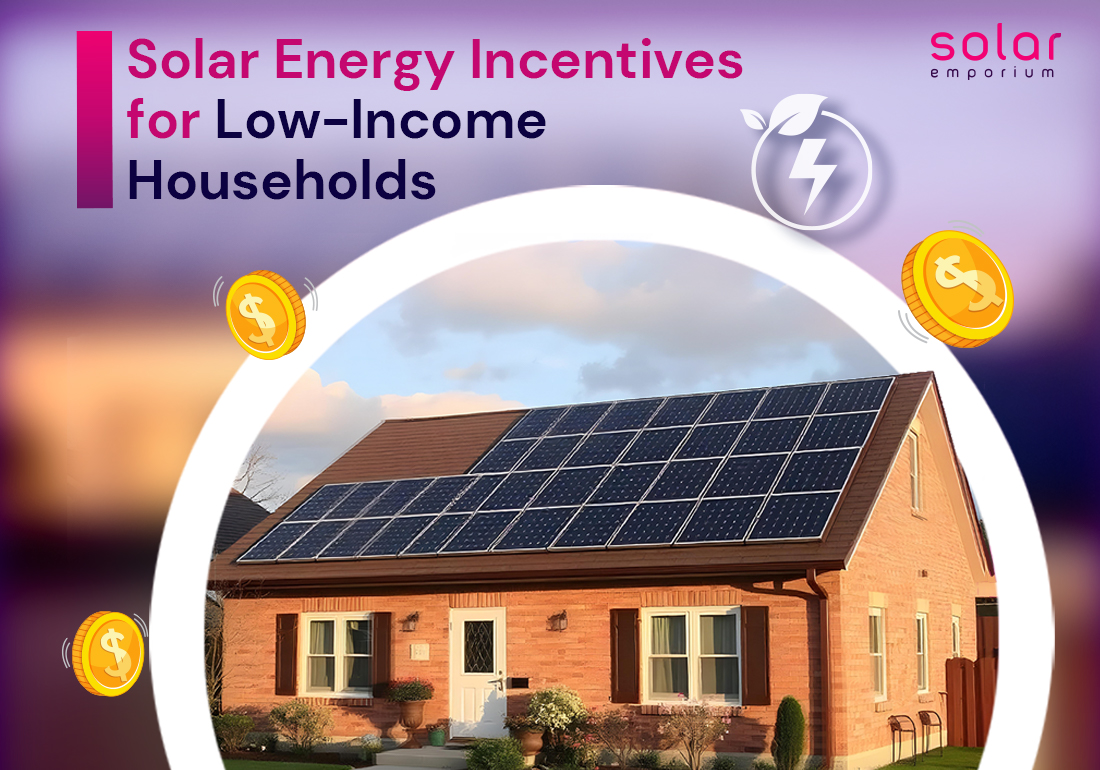Australia stands tall when the talk is about harnessing the sun’s energy to power your home.
The country has all the suitable conditions for generating solar energy, which helps its residents shift quickly toward renewable energy sources and live a sustainable life.
However, the high upfront cost of solar installation is one pressing issue that makes it daunting for low-income households. Luckily, several government incentives and innovative financing options have recently shed a spotlight on low-income households.
So, what specific incentives are available to ensure everyone can access this sustainable resource?
Let’s explore the landscape of solar incentives for low-income households in Australia and discover how they illuminate the path to a bright, sustainable, and equitable future for all!
Slash Your Electricity Bills: Explore Top Solar Incentives and Rebates in Australia
Before diving into specific incentives for low-income communities, it’s essential to understand what solar energy incentives are.
Moreover, knowing the types of solar rebates will not only empower local communities to embrace sustainable living but also lighten the financial load on their wallets.
What are Solar Energy Rebates and Incentives?
Solar incentives and rebate programs are financial aid designed by the federal or state government, local organizations, or any utility companies to reduce the cost of solar panel installations.
These government policies influence solar adoption rates and encourage the use of renewable energy. This initiative minimizes the burning of fossil fuels, thus reducing our carbon footprint and helping combat climate change.
Incentives help to transform lives, making solar energy widely accessible and appealing as a reliable, clean energy source.
Types of Solar Incentives Available in Australia
The Australian government has provided a wide range of solar energy rebates, tax credit programs, and grants throughout the years.
These incentives could vary depending on state laws or other conditions, such as climate, geographical location, etc. Still, the ultimate goal is always to lower the price of solar panel systems, making them technologically advanced and affordable.
So, here we have listed the subsidies and rebates that fund solar energy projects around Australia:
Small-scale Renewable Energy Scheme (SRES): This program offers Renewable Energy Certificates (RECs) that can be traded or sold. The scheme helps to obtain monetary benefits from the installed small-scale solar PV systems.
Feed-in Tariffs (FiTs): With feed-in tariffs and net metering options, residents can return excess stored energy to the grid. This enhances grid stability while offering homeowners financial rewards.
Renewable Energy Certificates (RECs): Aiming towards Australia’s Renewable Energy Target, these certificates offer various discounts and incentives to residents, increasing the solar adoption rate. They can also be sold to energy retailers to meet the daily energy demands.
State Government Grants and Rebates: Through these solar grants and rebates, the government ensures that the high installation cost of solar panels and battery storage options is reduced in various states across Australia.
Solar Loans and Financing Options: The incentive provides affordable energy options for all. With a flexible payment option and low interest rates, the solar installation process has become much smoother for low-income families.
National Energy Guarantee (NEG): NEG is a policy framework designed to ensure a reliable and affordable electricity supply while reducing emissions. It promotes renewable energy investments, shaping a healthy, green planet.
Solar Battery Incentives: In addition to solar panel installation, some Australian states, like NSW and Victoria, offer special rebates on solar batteries. This helps to create a more energy-resilient future and enhances energy security.
Feed-in Premiums: In some states, additional payments are offered in addition to standard FiTs. This motivates larger solar installations and enhances profitability.

Why is Solar Incentives a Game Changer for Australia’s Low-Income Households?
Solar energy can be a burden for low-income households or families due to the high installation cost. This financial barrier can limit their ability to invest in renewable energy solutions and create a sustainable future together.
So, what’s the solution?
The Australian government and utility companies have developed several initiatives and incentives to address these challenges.
Solar energy programs and financing options can facilitate access to solar for underprivileged houses, reducing their high energy costs. They also offer greater energy independence by promoting financial stability and contributing to a cleaner environment.
So, solar energy incentives undoubtedly have significant impacts on the lives of low-income families. Isn’t it?
Solar for Everyone: Comparing Incentives for Low-Income and General Households
In Australia, solar energy incentives can vary between general and low-income households in several ways.
The chart below sums up how solar incentives vary with diverse income levels of Australian residents:
| Features | General Households | Low-Income Households |
| Incentive Type | Standard rebates, Feed-in-tariff, Small scale technology certificates(STCs) | Higher, additional rebates, and tailored financial assistance. Sometimes, they receive free or high subsidies to offset installation costs. |
| Eligibility | Homeowners with a standard income level | Communities and families are often categorised by specific income level |
| Financing Option | Standard loans and limited incentives are available | Can receive low or zero-interest loans depending on the eligibility and income threshold. |
| Financial Support Amount | Standard amount but typically lower than low-income households solar incentives | Gets direct financial assistance and high rebate amounts to reduce solar upfront cost |
| Recommendation for System Size | Typically, larger systems are encouraged to be installed | Focusing on needs and energy usage, small systems are promoted by the installers |
| Additional Support | Only limited to standard installation services | Receive ongoing support services along with free assessment for energy efficiency |
| Solar Awareness and Campaigns | General marketing and social awareness campaign | Targeted through community services and social services |
Unlock Savings: Top Solar Energy Incentives for Low-Income Families in Australia

A common question that often arises in conversation is: Are there any specific solar energy incentives for low-income households in Australia?
Well, the answer is yes, there are specific solar energy incentives for low-income households in Australia.
Solar Energy Rebates and Incentives
As mentioned earlier, Australia has many empowering home programs, such as the Small-scale Renewable Energy Scheme (SRES) and the Large-scale Renewable Energy Target (LRET).
The government also offers incentives like the Investment Tax Credit (ITC), which
allows homeowners to deduct a percentage of the cost of their federal taxes.
All homeowners, including low-income families, can apply for this tax credit to get a 30% credit for residential solar installations. Through these programs, they can gain financial incentives depending on the energy their system generates.
Low Income Household Energy Program
Many organizations and solar panel retailers arrange incentive programs targeting entirely low-income households in Australia.
One such notable program is LIHEAP (Low-Income Home Energy Assistance Program). Through this initiative, some states use funds to encourage solar panel installation for low-income renters.
Interest-Free Loan Schemes & Financing Options
Australian states like Victoria and Queensland have a wide range of financing and interest-free loan options to make solar energy available.
They offer green loans, solar leasing, power purchase agreements (PPAs), and other personal loans that ensure equitable access to solar energy in Australia.
These interest-free loan schemes and flexibility in payback time allow families to repay over time as they save on their electricity bills. The best part is that this reduces their financial burden while contributing more to a green future.
Community Solar Projects
A community solar project is an excellent option for people with financial and low space issues. Through this program, a group of people can enjoy the benefits of solar energy by using a large solar system in shared locations.
Subscribers don’t need to pay high upfront costs. They can choose the subscription model that best suits their needs and budget.
These community solar projects reduce costs and provide access to renewable energy, making energy accessible and affordable for people of all income levels.
Net Metering and Feed-in Tariff Program
Feed-in tariffs (FiTs) are incentives that allow households with solar panels to sell excess electricity back to the grid.
This can provide additional income or savings on electricity bills, making solar energy more attractive for low-income households.
Energy Efficient Program
The energy saving Scheme in NSW, ACT, Victoria, and other states helps low-income communities lower their energy costs.
Residents can also request energy audits and energy-efficient appliances, which might be free or cost a small amount, depending on the program’s laws and services.
State Government Solar Rebates and Incentives Programs
Specific states and territories may offer additional incentives for installing solar panels. The financial amount might depend on location, sun exposure, and other territorial features.
Let’s have a glance at two examples for a clear understanding:
South Australia
The Home Battery Scheme allows low-income solar grants and rebates for home battery systems.
Up to $6000 in subsidies are offered for these battery storage systems, which ensure a secure and reliable power supply during unexpected power outages or weather issues.
New South Wales Solar for Low-Income Households
The NSW solar for low-income household program offers free solar panel installations for eligible low-income families. This eliminates the solar upfront costs completely.
Also, from 1 November 2024, the NSW government will launch incentives for solar battery installation to enhance energy security and increase solar accessibility.
Best Ways for Low-Income Households to Access Solar Incentives: Step-by-Step Guide
- Research Available Incentive Programs
When you decide to enter the world of solar energy, the first thing that matters the most is proper research on your area’s local solar rebates and incentive programs.
To find the most updated information, you can check the government website, such as the Australian Renewable Energy Agency or other reliable portals.
- Check Your Eligibility
In most low-income household incentive programs, the authority requires proof of income, rental details, and sometimes participation in other social welfare programs.
This is to determine whether you are eligible for their specific solar incentive.
- Get Multiple Quotes by Consulting Solar Providers
Look for experienced providers of low-income solutions who can guide you through the available incentives and financing options. To get the best deals, get solar quotes from multiple installers.
- Apply for Solar Incentives and Financing
Done with selecting a solar provider?
Now, it’s time to apply for the relevant rebates, grants, or financing options. The solar providers help you navigate the paperwork and ensure you maximize available incentives.
- Get your solar System Installed.
After completing all the formalities, paperwork, and financing, work with your chosen installer to install the solar system.
- Track Your Savings and Enjoy the Benefits
Once done with the installation, keep track of your energy savings and any feed-in tariff income.
There are online portals where you can monitor your energy production and consumption, helping you assess the financial benefits of your solar investment.

The Broader Impacts of Solar Incentives for Low-Income Communities
Solar incentives for low-income communities can significantly enhance economic stability, environmental sustainability, and social equity.
From the above, you already know how solar incentives lower energy bills and enhance energy resilience to extreme weather. In addition, these incentives help to transition to renewable energy sources, improving air quality and reducing greenhouse emissions.
The growth of the solar industry also helps in community development. It outshines by creating job sectors and providing many economic facilities.
Overall, solar energy incentives not only empower low-income people but also promote a more equitable energy landscape for a sustainable planet.
To learn more about solar energy, keep your eyes on Solar Emporium. You’ll get all your solar needs with many exciting solar packages here.







